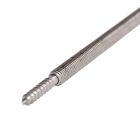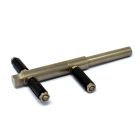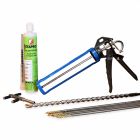Help & Advice Articles, Videos and How-to-Guides
Filter Articles

How to Fix a Bulging Wall
Discovering a bulge in your exterior wall is understandably concerning. The assumption is that the wall might collapse or there’s a serious underlying structural problem. While it’s crucial to get the wall assessed by a structural specialist as soon as possible to determine the cause, there are usually solutions that can be used to fix the problem - with lateral restraints generally being the most unobtrusive, long-term option.
What are bowing walls?
Bowing or bulging walls are walls that curve outward. Essentially, this looks like a lump in the brick, block or stonework and may be accompanied by a crack. It can affect any wall, but a common issue is a gable end wall bowing or bulging. It’s normally quite obvious and can be diagnosed by examining them visually, but if you think you have an issue, always get the opinion of an expert.
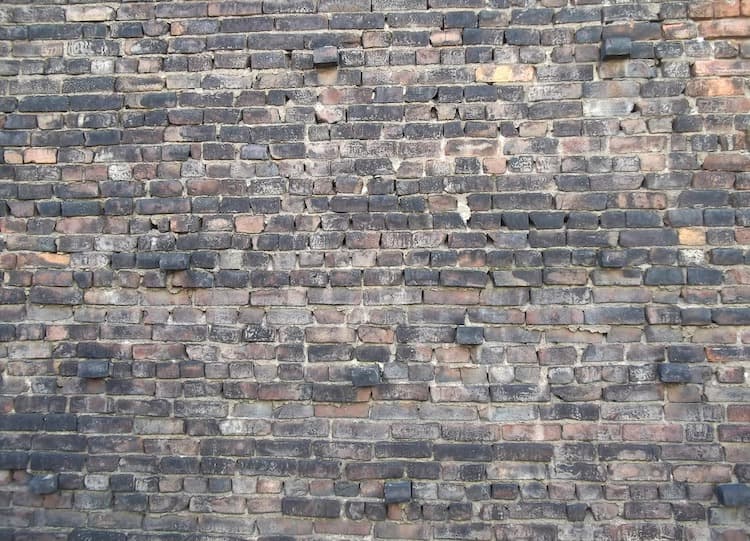
Why are my exterior walls bulging or bowing?
Bulging or bowing walls are down to decreased stability in the wall and can affect old and new properties. It might be caused by:
- Floors not being adequately tied to walls.
- Failed wall ties - if this is the cause, Permagard also stock replacement wall ties. See our complete guide to replacing wall ties.
- More weight being placed on the structure - e.g. heavy items being stored in an upper storey room.
- Too much moisture - causing the substrate to swell.
- Not enough moisture - causing the substrate to shrink.
- Mistakes and issues when building the structure.
The end result of these issues is that the wall decouples from the main structure, causing it to pull away and resulting in the bulge that you can see.
Ultimately, if you notice your wall bulging or bowing - it’s crucial to get the cause properly diagnosed by a structural specialist.
Once the problem has been diagnosed, you can start thinking about the fix. There are several possible solutions depending on the cause of the bulge, but a popular solution is installing lateral restraints. They provide a permanent fix without the obtrusive work needed with some other installation solutions. We look at lateral restraints in more detail below.
What are lateral restraints?
Lateral restraint is a method of structural repair that prevents brick walls from bowing or moving away from the rest of the structure. Lateral restraint wall ties are stainless steel rods that taper into a screw. This allows them to be wound securely into the joists and bonded to the brickwork, reattaching the wall to the floor joints and providing structural stability.
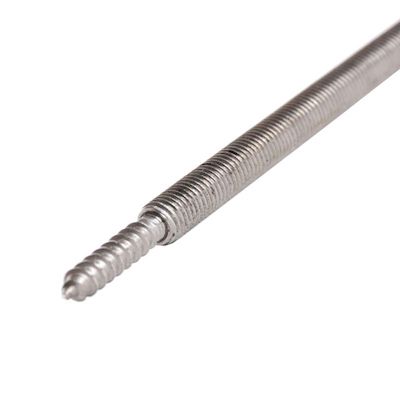
They work as an alternative to angle straps that are screwed onto joists. Lateral restraints have several advantages over angle straps, including:
- Causing far less disturbance to the household when fitting them.
- Being much stronger - angle straps are only as strong as the shear strength of the screw heads.
- No need to remove fitted furniture or bathroom suites. These need to be removed to fit angle straps - involving tradespeople like joiners and plumbers.
Pattress plates vs lateral restraints
Pattress plates are metal plates on exterior walls that are connected to a rod or bolt to prevent bowing. They’re an ancient fix and feature on many historic buildings. Their installation causes significant upheaval, and though they can be an attractive addition to a building, lateral restraints are often a simpler, easier solution.
When to use lateral restraints
Regulations state that lateral restraints must be installed in new build homes. However, it’s possible for these to fail over time, and older properties likely won’t have them at all - with floor joists or cross walls performing the same function.
You likely won’t notice that restraints have failed or are missing until there’s a problem. As we’ve discussed, this might appear as a crack or bulge in the brickwork. Once the root cause has been identified by a professional, you can identify potential solutions.
Installing lateral restraints creates much less disruption than other solutions. When an expert has confirmed they’re suitable for your specific scenario, lateral restraints are one of the best options for fixing a bulging wall.
How to install lateral restraint ties
Lateral restraint ties can be fitted from outside the property with a minimum of disturbance. You may need to lift some floorboards to identify where the joists are and also to make sure you avoid any pipes or cables when installing. The only power tool necessary is a masonry drill - the other tools you’ll need are all available in our Easi-Fix Kit.
But if you decide to buy our Easi-Fix Lateral Restraints individually, before starting out, make sure you also have:
- A 14mm drill bit (or one that’s long enough to pass through both skins of brick work)
- Lateral restraint fixing key 8mm
- Either Permagard Polyester Resin or Permacem Anchor Grout
You can install them in just a few steps:
- Begin by drilling a 14mm hole through both skins of brick work.
- Insert the restraint into the pilot hole and attach the lateral restraint fixing key.
- Slowly wind the lateral restraint through the joists, leaving the outer end recessed by approximately 15mm.
- You can now test the outer end for strength of fix (typically 5Kn - 10Kn).
- Resin bond the outer end of the lateral restraint into the brick work and finish off with mortar or mastic.
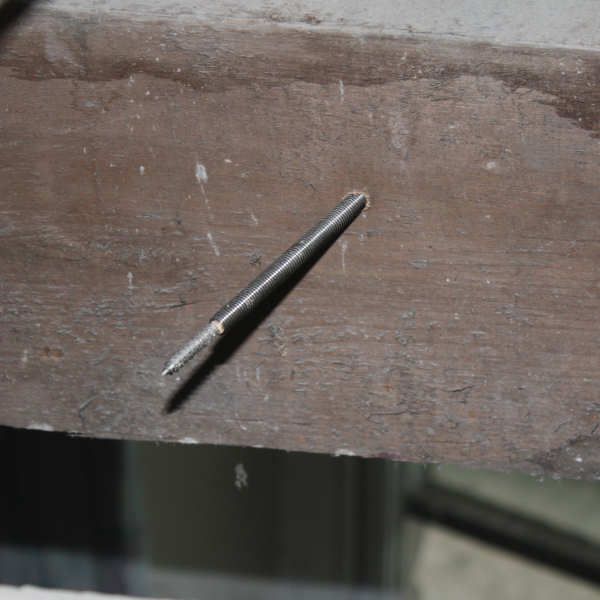
If you have any queries about installing lateral restraint ties, get in touch with our technical team by calling 0117 982 3282 or emailing [email protected].
Permagard: the lateral restraint experts
We supply everything needed to successfully fit lateral restraints, including individual components and full kits.
- Easi-Fix Lateral Restraint - available in 1-metre and 1.5-metre lengths
- Easi-Fix Lateral Restraint Wall Tie Kit - our all-in-one kit containing everything necessary to install lateral restraints.
- Easi-Fix Lateral Restraint Fixing Key 8mm
- Armeg SDS Plus Hammer Drill Bit 14mm x 450mm
- Easi-Fix Cementitious Grout 2C
If you have any questions about which lateral restraints you need or how to install them, get in touch with our friendly team by calling 0117 982 3282 or email us at [email protected].

